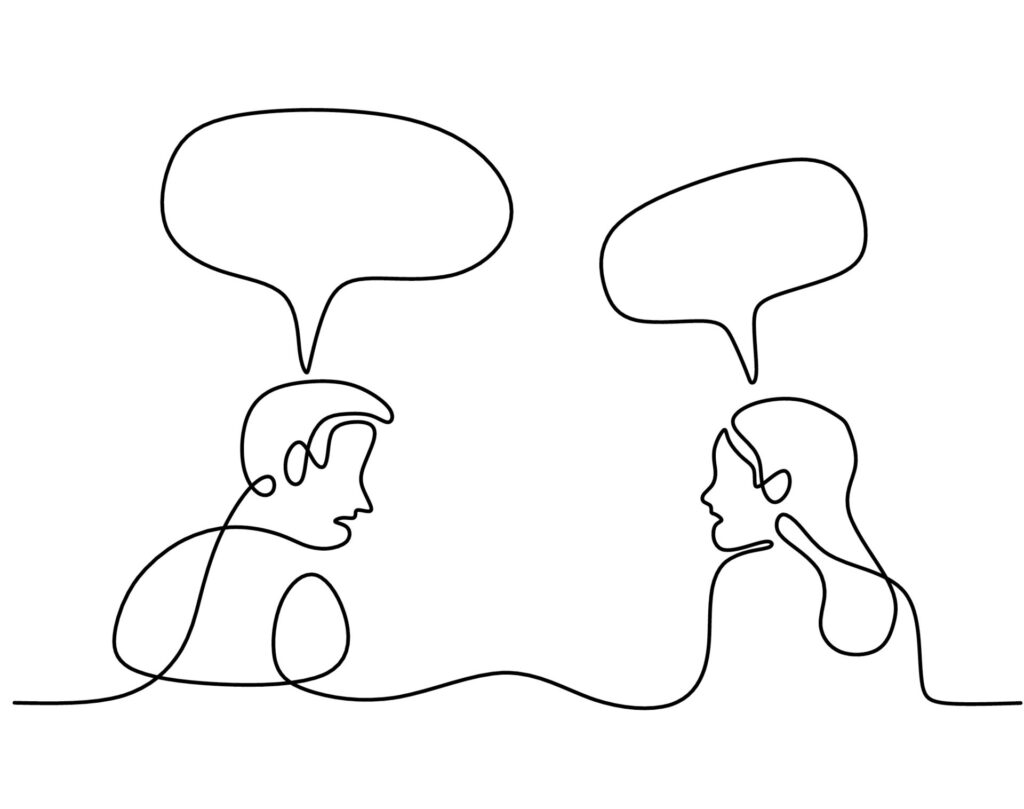Psychology is a rapidly-growing field with implications for all aspects of life. However, due to current practices, there’s over-representation of White, female heterosexuals.8 The term, “WEIRD,” has even been coined for “Western, educated, industrialized, rich and democratic,” the prevailing participant characteristics in behavioral research.2 These quasi-homogenous demographics are detrimental as they limit applicability of results to explaining lived experiences.8
A noteworthy, often over-looked, demographic is socioeconomic status (SES). And ironically, socioeconomic diversity may be a key to understanding some topics previously inconclusive in the extant literature.
Demand/withdraw patterns are self-perpetuating communication styles where one partner discusses an issue or intended change but is met with avoidance, most commonly women demanding and men withdrawing.6 Current literature provides inconsistent conclusions about the adaptivity of this pattern. One study describes benefits of withdrawal, wherein it facilitates stress recovery after a workday or negative emotional expression.9 Alternatively, a study on emotional experiences in wife demand/husband withdraw situations found higher demand was associated with greater wife negative affect (both experienced and expressed) and greater husband experienced negative affect.7
To explore these inconsistencies, Ross and colleagues (2019) tested SES’ impact on the association between demand/withdraw and wife relationship satisfaction. The researchers found that in problem solving and social support conversations, withdraw reacting to wife demands is maladaptive for affluent couples, leading to lower satisfaction.9 However, this same strategy is beneficial for sociodemographically risky couples because withdraw provided a buffer from wives’ judgements to avoid subsequent conflict over the strain of external factors.
Like demand/withdraw patterns, findings on the connection between empathic accuracy (EA)–one’s ability to correctly discern another’s emotions–and well-being are conflicting.4 For example, a study on newlyweds found benefits of EA on empathic understanding in arguments and couple well-being through greater accommodation.5 Another on couples’ conflict found men’s EA predicted subsequent relationship closeness while women’s EA promoted positive mood, both when considering emotions that were non-threatening to the relationship.3 Meanwhile, a study on health professionals found that, while crucial to providing personal care, those with higher empathy experience greater burnout and feeling undervalued, with negative spillover from work into personal life.1
Hittner and Haase (2021) investigated EA in conversations with one’s partner about conflict. The researchers found EA promotes higher well-being and lower ill-being for those with low SES, while EA was detrimental to marital satisfaction for higher-SES individuals.4 They propose this is because social relationships are more crucial to lower-SES individuals, while EA may bring up conflicting (individual) goals which could be relationship threats in higher-SES individuals.
To progress the field, it is crucial for psychologists to make a conscious effort to diversify subject pools. These studies provide support for impactful benefits of more inclusive sampling, leading to more nuanced views of relationship processes.
- Gleichgerrcht, E., & Decety, J. (2011). The costs of empathy among health professionals. In J.Decety (Ed.), Empathy: From bench to bedside. MIT Press.
- Henrich, J., Heine, S. J., & Norenzayan, A. (2010). The weirdest people in the world?. The Behavioral and brain sciences, 33(2-3), 61–135.
- Hinnekens, C., Loeys, T., Schryver, M., & Verhofstadt, L. L. (2018). The manageability of empathic (in)accuracy during couples’ conflict: Relationship-protection or self-protection? Motivation and Emotion, 42(3), 403–418.
- Hittner, E. F., & Haase, C. M. (2021). Empathy in context: Socioeconomic status as a moderator of the link between empathic accuracy and well-being in married couples. Journal of Social and Personal Relationships, 38(5), 1633-1654.
- Kilpatrick, S. D., Bissonnette, V. L., & Rusbult, C. E. (2002). Empathic accuracy and accommodative behavior among newly married couples. Personal Relationships, 9(4), 369–393.
- Klinetob, N. A., & Smith, D. A. (1996). Demand-Withdraw Communication in Marital Interaction: Tests of Interspousal Contingency and Gender Role Hypotheses. Journal of Marriage and Family, 58(4), 945–957.
- Leo, K., Crenshaw, A. O., Hogan, J. N., Bourne, S. V., Baucom, K. J. W., & Baucom, B. R. W. (2021). A replication and extension of the interpersonal process model of demand/withdraw behavior: Incorporating subjective emotional experience. Journal of family psychology : JFP : journal of the Division of Family Psychology of the American Psychological Association (Division 43), 35(4), 534–545.
- McGorray, E. L., Emery, L. F., Garr-Schultz, A., & Finkel, E. J. (2023). “Mostly White, heterosexual couples”: Examining demographic diversity and reporting practices in relationship science research samples. Journal of Personality and Social Psychology, 125(2), 316–344.
- Ross, J. M., Karney, B. R., Nguyen, T. P., & Bradbury, T. N. (2019). Communication that is Maladaptive for Middle-Class Couples is Adaptive for Socioeconomically Disadvantaged Couples. Journal of Personality and Social Psychology, 116, 582-597.


I love how your blog post emphasizes the necessity for context within relationships. When it comes to demand/withdrawal patterns, it’s fascinating that SES could reverse the perceived adaptivity or maladaptivity of a communication style within a couple. It highlights that strategies within a relationship are not one-size-fits-all but must be understood in context.
Your article and this study are very successful on shedding light on the lack of diversity of subject pools. In studying relationships, I think it could be especially useful to diversify the sexuality of participants. In many studies I find myself wondering, how would these results apply to a homosexual couple? Diversifying socioeconomic status is a step in the right direction, but for future research I think there is more to be done to address all populations.